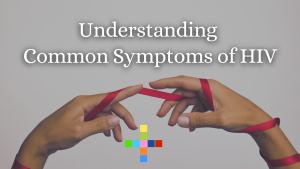
What Is Dissociative Identity Disorder And How To Deal With It
Dissociative Identity Disorder (D.I.D.) is a health issue that is associated with a large number of people diagnosed with mental illness. Multiple Personality Disorder was the initial diagnosis and how it may be more commonly known. Those diagnosed with D.I.D. have more than one identity and no control over which one governs them or when each will emerge.

Discussing mental illness is difficult for many because of the negative stigma society has attached to it. Fear of the unknown can easily be combatted with education. Statistics show that 1 out of every 5 people we know are affected by some form of mental illness. These numbers bring this issue much closer to home.
Detecting that a loved one may have D.I.D. is less complex than suspecting you may be suffering from it. The switch of personalities usually occurs under the radar of the individual experiencing it. Learning what signs to look for would be helpful in either case to start receiving the necessary treatment to live with this disorder.
D.I.D. Warning Signs
Dissociation with what the majority views as reality
- A form of disconnection from all that should be familiar
- Time gaps with no recollection of what occurred during those intervals
- Feeling as though you’re experiencing life from a window looking in
- Encounters with people or places that associate you or your loved one with a different person, lifestyle or name
- Becoming self-aware of more than one identity
- Extreme self-criticism
- Depression that may provoke suicidal tendencies
If any combination of the signs mentioned is present, it’s time to consult a mental health professional. Discovering the trigger or root cause of the health issue is crucial to receiving effective care. Awareness, discovery and treatment are the best weapons formed against any medical diagnosis.
The cause for Dissociative Identity Disorder has been linked to childhood trauma experienced under the age of 9. Females are statistically known to be more prone to this disorder according to reports of such trauma. Men have been more frequently known to suffer from pathological dissociation versus psychological. The average number of personalities identified range from 8-13. In some cases over a hundred personalities have been witnessed.
RELATED ARTICLE: A Bad Mood V.S. Depression, And How To Deal With Both
Treatment Goals
- Identity and work through the trauma that triggered the illness
- Identify the multiple identities
- Attempt to integrate the multiple personalities to regain one identity
- Keep logs of time unaccounted for
- Seek support for additional observations that may be pertinent to properly determine the stage of the condition
- Seek help immediately if you feel you are a danger to yourself or others
Quick Review
Seek awareness of what it is you’re dealing with and how to live a productive life in spite of it. Treating the disorder will improve your quality of life or the life of someone you care for. Follow the advice and guidance of a health professional. Most of all steer clear of society’s labels of crazy, weird and freaky. Do not allow healing to be thwarted by ignorance.





